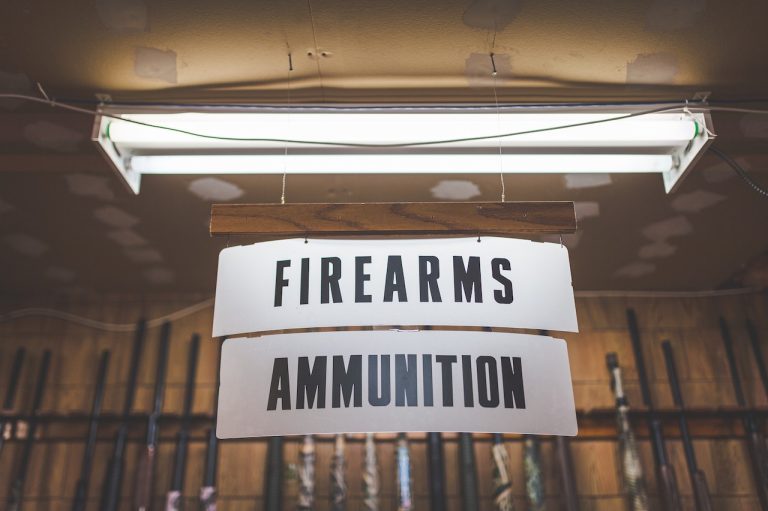Bureau of Alcohol, Tobacco, Firearms and Explosives (ATF)
As the nation’s principal agency tracking gun manufacturers and dealers, the ATF inspects equipment and collects information on many of the firearms involved in criminal activity. The agency collects comprehensive data on the manufacture and movement of firearms across the U.S. and breaks down data by state, thereby providing reporters with regional insights about gun usage.
According to its website, ’a key component of ATF’s enforcement mission is the tracing of firearms on behalf of thousands of local, state, federal and international law enforcement agencies.’ These insights include firearms recovered and traced and then the top: types of firearms and calibers, categories for reasons traced, source states, time-to-crime rates, age of possessors, and recovery cities.
From the 2020 state data you can learn that the total number of firearms recovered and traced in the state of Texas was 38,394. Of the 31,301 that were involved in a crime and identified a purchaser, 14.1% had a time-to-crime rate of under three months. For perspective, the average number of firearms involved in crimes and traced by the bureau per state (excluding Texas) is 5,459 with 12.6% having a time-to-crime rate under three months. The average time-to-crime rate nationally is 7.01 years.
Increased manufacturing and tax revenue
ATF also reports on the manufacturing of firearms. The annual report documents the manufacturing, sales, imports and exports of firearms, providing helpful and supporting data for reporters writing on the industry or manufacturers in their states or communities.
Manufacturing of firearms in the U.S. has greatly increased in the last decade. Between 1986 and 2008 there was a consistent 3-4 million firearms manufactured each year while between 2009 and 2019 the number of firearms manufactured averaged 8.2 million with a peak of 11.4 million in 2016. A portion of those firearms are exported (peak of 554,000 in 2018, predominately pistols) while many more firearms are imported into the country (peak of 6.8 million in 2020, 4 million of which were handguns).
According to the ATF website, the National Firearms Act (NFA) was enacted in 1934 and ‘imposed a tax on the making and transfer of firearms defined by the Act, as well as a special (occupational) tax on persons and entities engaged in the business of importing, manufacturing, and dealing in NFA firearms.’ The original $200 tax, initially considered very severe in order to discourage firearm transactions, has not changed since 1934.
As manufacturing and sales have increased over the last decade so has the tax revenue collected through the NFA. In 2016, the peak year of manufacturing, $68.6 million in taxes was collected by the government that year. This is an increase from $1.2M collected in 1984. Therefore, tax revenue increased 54-fold in 32 years.
Licensed firearm dealers and firearm sales
The number of licensed firearm dealers rose 18% from 2009 to 2018, thought to be mainly driven by the increase in firearm manufacturing rather than population growth, which was 6.6% for the same time period. Unfortunately, the number of licensed dealers does very little to make clear the true scope of the firearm sales industry because there is no requirement to report sales to ATF. Additionally, ATF is prohibited from maintaining any sort of comprehensive list of firearm sales. One measure used to help give a small insight into firearm sales is the National Instant Criminal Background Check System (NCIS).
This system was initiated in 1993 as part of the Brady Handgun Violence Prevention Act (commonly known as Brady’s Law) and has been fully operational since 1998. The system is managed by the FBI with cooperative effort from ATF, the Department of Justice, and state and local law enforcement agencies.
This system conducts background checks for all federal firearm licensees or FFLs. The FBI conducts NICS checks for all firearms transactions in 31 states, 3 U.S. territories and the District of Columbia. Twelve states participate with the NICS by performing all background checks for their states’ FFLs and 7 others rely on NCIS for some checks, generally long gun sales, and perform others internally, most frequently handgun sales or handgun permits.
Since 1998, more than 300 million background checks have been processed through the NCIS, with more than 2 million denials as of April 2022. There are plenty of resources on their website a reporter could use including the ability to view background checks by state or even the top 10 highest days/weeks for checks.
The economic impact of firearms on jobs and wildlife conservation
The firearm industry was called a ‘bright spot in the U.S. economy’ last June by Forbes due to its gain of 10K jobs in 2020. The publicly traded companies that lead the industry, including Smith & Wesson, Vista Outdoor, and Sturm, Ruger & Company, said they increased hiring to meet the demand for firearms and ammunition as their sales increased throughout the start of the pandemic.
The latest report from The National Shooting Sports Foundation (NSSF) estimates 169,523 people are directly employed in the industry that manufactures, distributes, and sells firearms, ammunition, and hunting equipment. An additional 206,296 people are employed in either supplier or secondary to direct production jobs, such as those that provide manufacturers with component parts like triggers or gun gases for shipping.
A 10-11% federal excise tax is imposed on the manufacture of firearms and ammunition, based on the wholesale price, and that rate has not changed since it was implemented in 1919. The Pittman-Robertson Act of 1937 ensured that the revenues would be apportioned to state wildlife agencies, through the creation of the Wildlife Restoration Trust Fund. Funds are collected into the fund and then allocated to states the following year through grants. A portion of the grants is specifically allocated for hunter education and safety programs as well as construction and maintenance of public target ranges. The NSSF claims $1.1 billion in excise tax was collected in 2021.






